Bengaluru, KARNATAKA :
Gundappa Viswanath’s masterful stroke of 137 on debut against Bill Lawry’s Australia persuaded Irfan Sait to choose cricket over football.
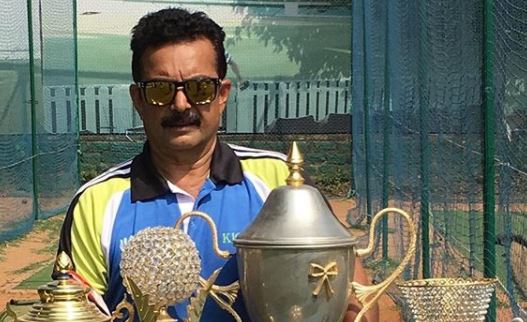
This is not the tale of a cricketer who rose through struggles to make it big for India. This is about a man who took an unthinkable path in his life, coaching, unearthing the best talents. This is about Irfan Sait, a coach who has been thanked endlessly by several cricketers.
Who is Irfan Sait? Without Irfan, cricket would not have a Mayank Agarwal piling on centuries in Ranji Trophy and sitting atop of the leading run-scorers list; or Manish Pandey, first Indian to score an IPL century; or Robin Uthappa, second Indian to win an IPL Orange Cap (after Sachin Tendulkar), and more.
It was Irfan who had once cajoled the father of Nooshin Al Khadeer to switch her daughter from hockey to cricket. It was Irfan who persuaded Swami-ji to permit Karu Jain to play cricket. It was Irfan who assured a 12-year old Veda Krishnamurthy’s parents to send her from Kadur to Bengaluru. It was Irfan who ensured Vanitha VR shifted her focus from academics to cricket.
***
But years before that, Irfan was awestruck by Gundappa Viswanath, whose masterful 137 on debut against Bill Lawry’s Australia that rung the bells of cricket in his mind. Even then, the transition from a football-playing boy to Director of Karnataka Institute of Cricket (KIOC) has not been an easy one.
With a unique distinction of completing the Levels I, II and III coaching courses from India, Australia and England, Irfan throws light on his passion for cricket, on discovering talents like Manish and Mayank, and women’s cricket in an exclusive interview with CricketCountry:
CricketCountry (CC): What drove your interest towards cricket despite you being a football addict?
Irfan Sait (IS): It was Gundappa Viswanath. His century on his debut created an impact on me. I was 8 years of age when my teacher announced about his century. Actually it made no sense [to me] as I knew nothing about cricket. But I was aware it was a huge event, which was my first inspiration. From thereon, like most of us in India, I treated cricket as important as water.
CC: When in college and playing cricket at Chennai, you were not selected for the Tamil Nadu Colts team. Could you narrate that incident?
IS: I was playing for a club in Chennai. I had done very well in the league stage. When I went for the selection, they said I was not a domicile of Madras. I did not take it personally. Since they did not want me, I backed off.
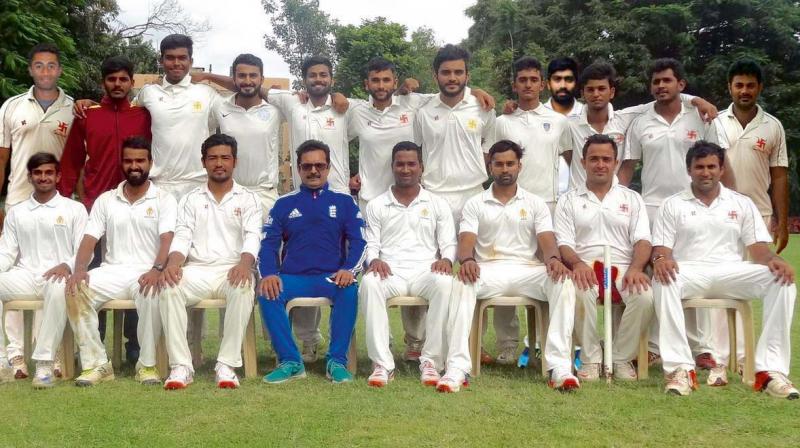
CC: Tell us more about Swastic Union Cricket Club (SUCC), where you were first a captain and are now the coach. What has been the journey like?
IS: I must thank Mr YB Patel, former Karnataka captain, my godfather in Karnataka cricket and was the secretary of SUCC. He was the one who pushed me. He encouraged me a lot and provided me all the support I was seeking.
There were times when the club played without a proper XI. Only 7-8 players were present. I took charge and signed up some young boys, captaining them. Then, we were at the sixth division. Today we have reached the first division. I am happy we are doing extremely well.
CC: You also formed the Banni-Mantap Cricket Club in Mysuru…
IS: I started with a set of my childhood friends along with whom I used to play cricket. Although it was not an official club, we participated in various competitions and did very well. Some played at university level and some played zonal cricket in Mysore. Those were the most difficult days when nobody had the provisions to buy anything. We bought one kit that was used by everyone. We also did not have a proper pitch in place. But the cricket was great.
CC: With little experience of running local cricket clubs and teams, what led to the launch of KIOC?
IS: Had there been no difficulties, we would not have enjoyed this journey. We went through those times, which is why it looks so flowery today. I started off with the blessings of my mother and a few cricketers. Some, like the coaches and ground-staff, are still with me. The people who had restricted me from offering the ground for the academy then, support me today.
There have been times where I had no money to pay the coaches. I had to borrow, sometimes on interests, in order to pay the coaches. Since cricket was my pleasure and passion, I had to drain off my retail outlet which was a fashion garment store called Fashion Street.
There was trouble from both ends. My focus and attention was on cricket, so my business was drowning. Many a time were the funds of the business used for the academy. That was when I had to make a choice and I went with my passion — cricket. Although it was a risky proposition, cricket is something I love and enjoy.
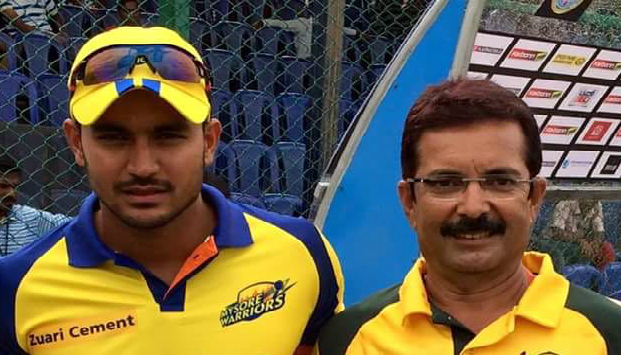
CC: Manish Pandey has been mentored by you for 20 years. How did you spot him?
IS: There was a time when I had announced discounted price for children from the army. The word spread across like wildfire. Manish Pandey’s father, an army man, brought his 8-year-old kid along to the academy. From the very first year we knew Manish was very special. The thing I really pride over is that in the very first function that we had, we chose Manish as the most promising cricketer. He used to enjoy his batting and I remember he never used to get out at all in the Under-8 and Under-10 matches. He is god-gifted and also had the knack of taking singles.
One day, I was umpiring the U-8 match where Manish was batting. He took a run off every delivery and won the game with ease. During a seniors match when the rest of batsmen were struggling, Manish went on to score an unbeaten 155 to make our Jawans Cricket Club win. These are fond memories that I have shared with Manish.
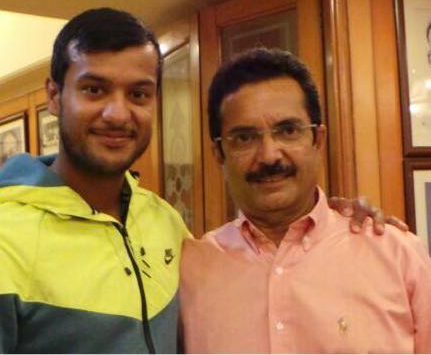
CC: How did Mayank Agarwal’s journey begin in KIOC?
IS: In KIOC, Mayank came in as a 15-year old. He used to devote several hours to net practice. There was a time when he ran into an electric pole during a training session and sustained a deep cut under his eye. An important league match was to take place a week after. I suggested him to take rest but he was determined to continue playing. His right eye had stitches but he went on to score a hundred. This boy was different. He was hungry to get runs.
The Nivarana Cup is an inter-academy tournament in Bengaluru. In that, he scored a double-hundred in a T20 game. Like always, I sent out a press note and mentioned about the double-hundred. That was something they could not believe. A senior journalist told me, ‘it could have been a 30-yard ground.’ I wrote back to him saying, ‘This was the semi-final; 12 teams had played, which meant 144 players participated in the tournament. Nobody has scored a hundred on the same ground and this boy scored a double-century. Please give some credit.’ This was noticed by everyone.
Unfortunately for him, during the U-19 days, Mayank worked hard but could not score as heavily as anticipated. There were times he came back depressed on not getting runs. Luckily, I had an international coach with me during that phase. Ross Edwards helped him with the training. Even Mohammad Azharuddin had asked to tell the boys to enjoy their batting. When I conveyed that piece of advice to Mayank, it turned around his fortunes. He was then selected for the India A team that travelled to Australia. That was when he got 161 on his debut.
CC: Mayank has piled on runs for Karnataka in the ongoing Ranji season. Do you see him in the Indian squad soon?
IS: I felt Mayank should have been part of the limited-overs series against Sri Lanka. This was the right moment. Considering his red-hot form, he is doing what no one else has ever done. Unfortunately the selectors showed a blind eye. I was told that the selectors emphasised on his India A performance. His performance has not been so good in India A games. Now when he is doing so well, Mayank should have been there.
Of course, all others are also doing well. I think this would have been the right time for him to get a break. I pray hard that he gets it very soon. As a cricket coach and as someone who follows cricket intensely, it is not the just the number of runs but the way he is going about. His performance has been magnificent and nobody has done such thing in the past. I do not see anyone even coming close to this.
CC: In an interview with CricketCountry, Mamatha Maben had mentioned there were times you have shelled out money from your own pocket to organise women’s matches. Could you take us through that phase?
IS: There were times when women cricketers needed mutual and logistics support. I happily extended help from my end. For a long time women’s cricket has been treated very shabbily, but I knew these cricketers had the capacity in them to represent the country and get glory. They did very well. In 2005, they reached the final of the World Cup. And when I sit back and think about these moments, I feel I had done the right thing.
There was a time when women’s cricket had not merged with BCCI. Mamatha and Pramila Bhatt, who was the captain then, wanted to practice in the men’s stadium. There was a coterie opposing them. That was a very tough time. Somehow, I got the support of C Nagaraj, who knew this behaviour was against the state and the country.
CC: Veda Krishnamurthy and Vanitha VR have mentioned how you have pushed their families to allow them participate in cricket. They have credited you during their interviews with CricketCountry. How do you feel on them achieving greater heights today?
IS: Well, that is a feeling that I cannot describe in words. This is the happiness, satisfaction and pleasure that I get which no money can buy. At the same time, anytime they face any problem or a setback, we as coaches die a thousand deaths. We have developed so much of attachment that we are living a life through them. To sit back and think there are five international women cricketers from KIOC is a wonderful feeling. They in turn value the kind of support they received from KIOC.
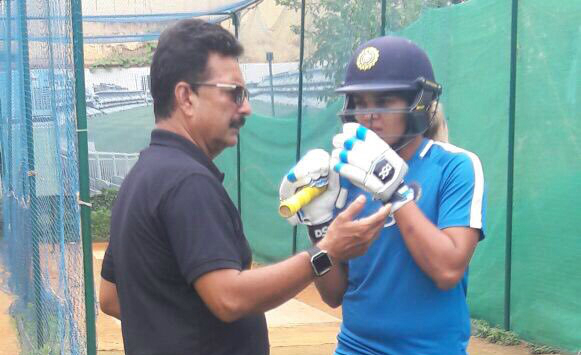
CC: Veda is playing in WBBL for the first time. Is there a special message you would like to convey to her?
IS: I want to tell her that we are living our life through her and enjoying her game more through her successes. She has already given us so much pleasure and happiness. Now I wish her the very best and I am sure she will come back with flying colours. She has been in touch and I know she is the one who carries women’s cricket on her shoulders. She is bringing a lot of glory not only to women’s cricket but to Karnataka and India.
CC: Tell us more about Sindhu Ashok and her journey from India Women to USA Women.
IS: She started off her cricketing career as a 10-year-old with us. She got very few chances initially. I had to work really hard to keep her interest in the game. She was also a very bright student. So she would indulge into education as well.
I realised that Sidhu was very strong-minded. She was mentally strong and had a good cricketing mind. Her education background also helped. She was playing for juniors and was leading Karnataka. That was when we built a good rapport. She knew what I was expecting from her.
Since then I backed her constantly not only for the junior tournament but the rest of her playing days in India. She set a record to her name getting six victims behind the stumps during the tournament. Thanks to her ’keeping and the support she extended from behind the stumps, the bowlers got more and more confident.
Then I realised that she could be instrumental in building the career of so many bowlers. There was this match during the U-19 days. Mumbai were dismissed for a paltry 55. Sindhu once again had 6 victims and fast bowlers Pooja Shah and Anuradha took 4 wickets each, courtesy Sindhu.
She was equally good at studies, which handed her a job in USA. Eventually she got married. She struggled for her visa initially, but her cricketing abilities handed her a Green Card. For me it was a very proud moment. At the age of 10 I realised she had the potential in her and she proved me right. Now that she will be leading USA in the World Cup qualifiers, it means a lot.
CC: BCCI have come up with an A team to boost the confidence of the budding women cricketers. Do you feel there should be more of such competitions in the future?
IS: Where women cricketers are concerned, the shelf life is small. Most of them do not consider it as a full-time profession. They quit the sport either to get married or to pursue academics. It is definitely good to have India A team system. It actually helps to keep women’s cricket alive.
If we can have fun tournaments (like Australia and England have Milo Cup and Quick Cricket respectively), there will more girls participating. One should also introduce inter-school competitions. Nevertheless, India are catching up on women’s cricket. Thanks to World Cup, there is so much enthusiasm. We have never seen so many girls register in our academy.
In terms of IPL, why not? Provided there is proper system in place. IPL has its downside as well. Everyone wants to be play only for the slam-bang game. We need to have these A tours and junior competitions to help women’s cricket get recognised more. There should be more awareness of the girls doing the right job by opting to play cricket.
CC: How does a day at KIOC begin? What are the special sessions that you provide to the youngsters?
IS: The day begins much before sunrise. I arrive at the academy before 6. There have been times when Manish has laughed at me and said, ‘Sir, main aapse pehele aaya. (Sir, I came before you).’ There are others as well who come in the dark and do some running. The first session begins at 6.30. We have a motivational chat for 2-3 minutes. Then we have a group session that ends at 8.30. We have breakfast before starting on one-on-one coaching from 9.30. It goes on till lunch.
We now have a full day program where we have boys from all over the country. They undergo fitness programmes from 9.30 to 10.30. From 10.40 to noon they have fielding sessions and from 12.30 to 3 they have net sessions.
After tea, we have a massive group session from 4 to 6. It is attended by almost 500-600 kids every evening. After sunset, every Monday to Thursday, we have one-on-one coaching from 6.30 to 9.
On Friday and Saturday nights we have gatherings of young boys who undergo weekend sessions. On Saturdays and Sundays we have 6 sessions in a day. Every session has about 250-300 kids turning up from morning to night. This is how our week runs. We work 365 days. We have not taken a break in 21 years.
CC: How do you spot upcoming talents?
IS: Our USP lies in giving the boys plenty of match practices. We now enrol boys and girls from the age of 5. Earlier, we started enrolling kids from the age of 7. Now we realise that young kids want to be part of this sport.
For the kids ranging from age group of 5 to 8, we focus on fun and enjoyment. We ask them to understand the process. The only sign we look for is whether the kids enjoy themselves. We just want them to be happy and have some fun and go back.
From age 8, we start conducting U-10 tournaments within our academy. Since we have many kids, we organise our own tournaments. These kids start performing and playing from that age. Mayank Agarwal, Manish Pandey and all were spotted at a very young age. Ganesh Satish from Vidarbha as well was very talented at the age of 8. Robin Uthappa was special right since the age of 10. When we see kids enjoying, we encourage them. When they perform well, we give them more opportunities. Our entire staff and admin talk to the kids with a smile and encourage them. We make them believe that we are doing something different.
CC: Is coaching more challenging than playing cricket?
IS: The most challenging aspect is to retain the interest of the kids, especially when they are not doing well. To make them believe they can is the biggest challenge. Sometimes it hurts when our trainee works hard but does not do well. When you have a great bonding with the trainee and they come back teary-eyed, it is a horrendous feeling. The challenge is to ensure they are happy and enjoying the process.








